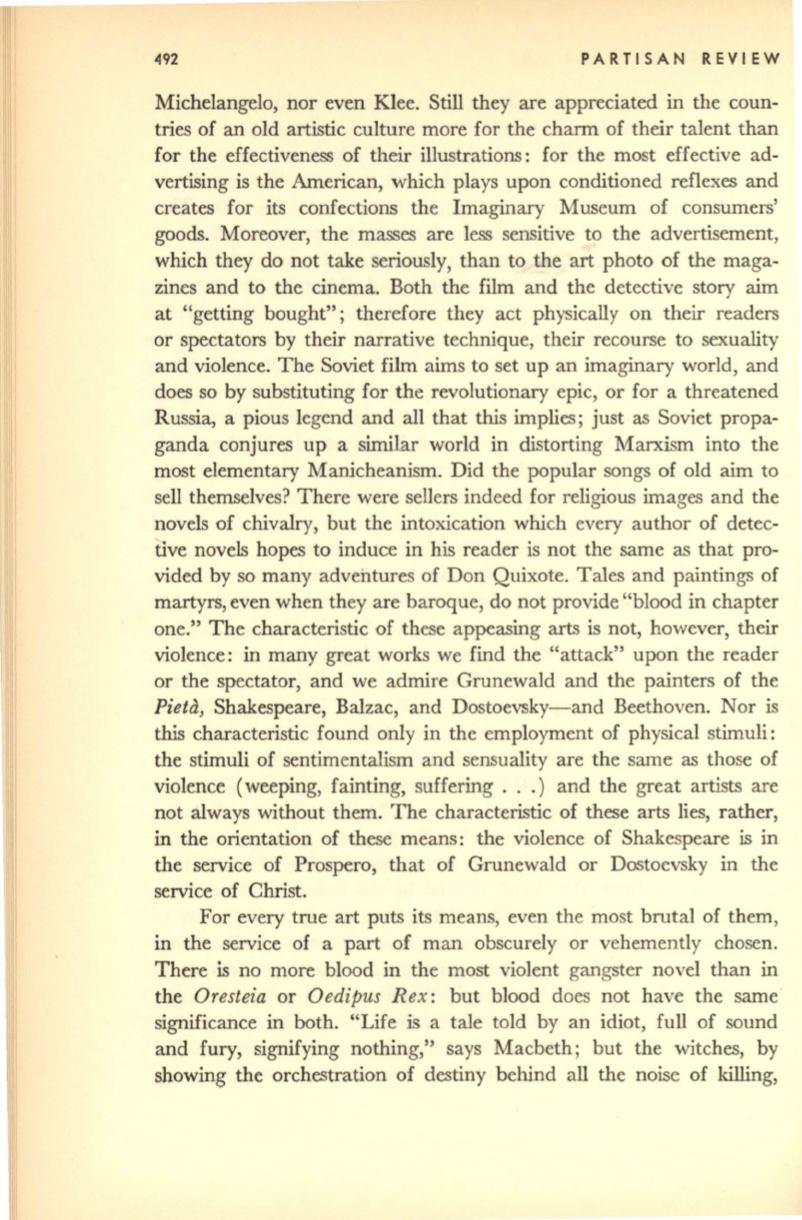
492
PARTISAN REVIEW
Michelangelo, nor even Klee. Still they are appreciated in the coun–
tries of an old artistic culture more for the charm of their talent than
for the effectiveness of their illustrations: for the most effective ad–
vertising is the American, which plays upon conditioned reflexes and
creates for its confections the Imaginary Museum of consumers'
goods. Moreover, the masses are less sensitive to the advertisement,
which they do not take seriously, than to the art photo of the maga–
zines and to the cinema. Both the film and the detective story aim
at "getting bought"; therefore they act physically on their readers
or spectators by their narrative technique, their recourse to sexuality
and violence. The Soviet film aims to set up an imaginary world, and
does so by substituting for the revolutionary epic, or for a threatened
Russia, a pious legend and all that this implies; just as Soviet propa–
ganda conjures up a similar world in distorting Marxism into the
most elementary Manicheanism. Did the popular songs of old aim to
sell themselves? There were sellers indeed for religious images and the
novels of chivalry, but the intoxication which every author of detec–
tive novels hopes to induce in his reader is not the same as that pro–
vided by so many adventures of Don Quixote. Tales and paintings of
martyrs, even when they are baroque, do not provide "blood in chapter
one." The characteristic of these appeasing arts is not, however, their
violence: in many great works we find the "attack" upon the reader
or the spectator, and we admire Grunewald and the painters of the
Pieta,
Shakespeare, Balzac, and Dostoevsky-and Beethoven. Nor is
this
characteristic found only in the employment of physical stimuli :
the stimuli of sentimentalism and sensuality are the same as those of
violence (weeping, fainting, suffering ... ) and the great artists are
not always without them. The characteristic of these arts lies, rather,
in the orientation of these means: the violence of Shakespeare is in
the service of Prospero, that of Grunewald or Dostoevsky in the
service of Christ.
For every true art puts its means, even the most brutal of them,
in the service of a part of man obscurely or vehemently chosen.
There is no more blood in the most violent gangster novel than in
the
Oresteia
or
Oedipus Rex:
but blood does not have the same
significance in both. "Life is a tale told by an idiot, full of sound
and fury, signifying nothing," says Macbeth; but the witches, by
showing the orchestration of destiny behind all the noise of killing,


